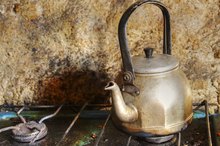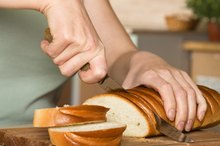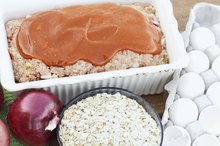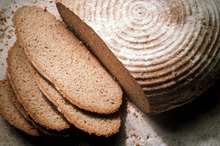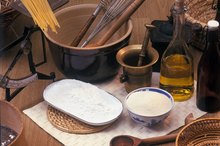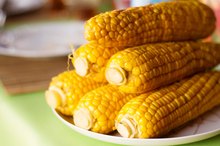Baking Tips for Barley Flour
Barley flour is made from milling pearl barley, or whole grain barley that's had its outer husk removed. You can use barley flour as a substitute for part of the flour in a baking recipe for health purposes and to achieve certain variations in texture. However, because of its low-gluten content, you shouldn't substitute barley flour for all of the flour called for in a recipe.
Health Benefits
Barley flour is a healthier alternative to using white and wheat flour in baked goods. According to Coleen and Bob Simmons, authors of "Cooking with Grains," barley is a low-fat, low-cholesterol grain that's high in complex carbohydrates, fiber, protein, and certain vitamins and minerals 1. Although barley is significantly lower in gluten than other flours, like wheat flour, people with Celiac disease or an allergy to wheat should still use caution when using barley flour as a substitute in cooking, as it is not 100 percent gluten-free.
Gluten
How to Use Amylase in Baking
Learn More
Barley flour lacks sufficient gluten for many baked good recipes. When making baked goods that require gluten, combine barley flour and wheat flour to comprise the total flour content the recipe calls for. The more the baked good needs to rise, the less barley flour should be used, proportionately. For loaves of yeast bread, the barley flour should only constitute about 20 to 25 percent of the total flour content. For flat breads, you can use a little more. For quick breads and cookies, you can use barley flour for up to half of the flour content. It's inadvisable to use much more than 50 percent barley flour in any baking recipe.
- Barley flour lacks sufficient gluten for many baked good recipes.
- For quick breads and cookies, you can use barley flour for up to half of the flour content.
Proper Measurements
In baking, precise measurements are essential to achieve the desired results. Freshly ground barley settles after a few days, meaning that its volume appears greater immediately after grinding than after it's been sitting a while. Therefore, to accurately measure barley flour for a recipe, don't use freshly ground barley unless it's had a few days to settle. Otherwise, you may not have enough flour in your recipe. One way to help freshly ground barley flour settle faster is to tap the container firmly against the counter.
- In baking, precise measurements are essential to achieve the desired results.
- Therefore, to accurately measure barley flour for a recipe, don't use freshly ground barley unless it's had a few days to settle.
Quality Differences
Barley Tea for Urinary Infections
Learn More
Baked goods made with barley flour, breads in particular, have a different consistency than those made with other kinds of flour. Barley flour makes baked goods moister than flour made from other grains. Barley flour also gives baked goods a cake-like texture as opposed to a bread-like one.
Related Articles
References
- "Cooking With Grains"; Coleen and Bob Simmons; 1999
- RecipeTips.com; Flour Tips and Substitutions; 2011
- U.S. Department of Agriculture. FoodData Central. All Purpose Flour.
- U.S. Department of Agriculture. FoodData Central. Wheat flour, white, all-purpose, enriched, bleached.
- U.S. Department of Agriculture. USDA Nutritive Value of Foods. Updated 2002.
- Wheat Foods Council. Types of Wheat Flour. Updated 2019.
- Dahl WJ, Stewart ML. Position of the Academy of Nutrition and Dietetics: Health Implications of Dietary Fiber. J Acad Nutr Diet. 2015;115(11):1861-70. doi:10.1016/j.jand.2015.09.003
Resources
Writer Bio
Based in Maine, Sage Kalmus has written extensively on fitness, nutrition, alternative health, self-improvement and green living for various websites. He also authored the metaphysical fiction book, "Free Will Flux." Kalmus holds a Bachelor of Science from Boston University's College of Communication and is a Certified Holistic Health Counselor with special training in Touch-For-Health Kinesiology.

